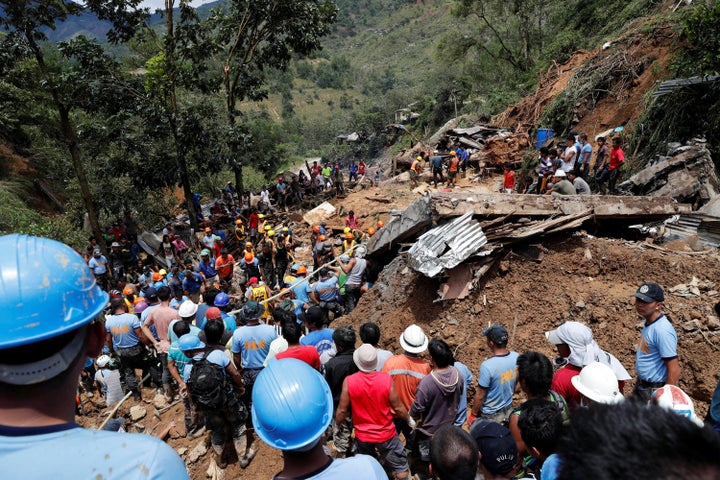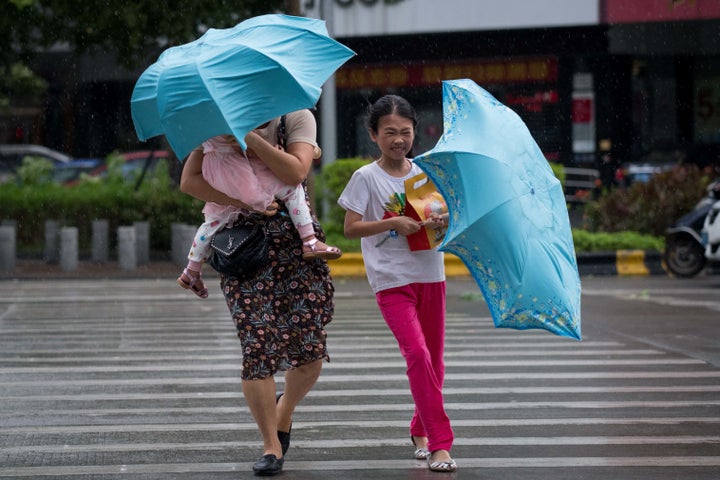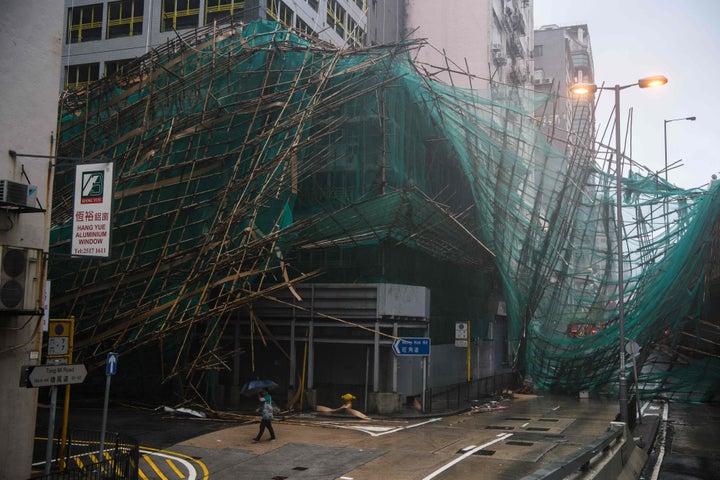
A clean up operation has swung into action in Hong Kong and Southern China after Typhoon Mangkhut wrecked buildings and shut down cities.
The typhoon was one of the biggest storms to hit southeast China since 1949 - when records began - with hurricane-force winds well over 200 kilometers per hour (124 miles/h).
The Hong Kong Observatory reported Mangkhut was the most powerful cyclone to hit the city since 1979, packing maximum sustained gusts of 121 mph there.
It had barrelled past the northern tip of the Philippines, killing at least 65 people, and then skirted south of Hong Kong and the neighbouring gambling hub of Macau, before making landfall in mainland China.

The typhoon, which had the equivalent strength of a category five Atlantic hurricane, has now weakened to a tropical storm as it moves deeper into southern China. It is expected to hit the Chinese regions of Guizhou, Chongqing and Yunnan later in the day.
In the Benguet province of the Philippines, hopes are fading for the 40 gold miners, who were trapped by a landslide as the typhoon made landfall on Saturday.
Itogon Mayor Victorio Palangdan told The Associated Press by phone that at the height of the typhoon’s onslaught on Saturday afternoon, dozens of people, mostly miners and their families, rushed into an old three-story building in the village of Ucab.
The building — a former mining bunkhouse that had been transformed into a chapel — was obliterated when part of a mountain slope collapsed. Three villagers who managed to escape told authorities what happened.
“They thought they were really safe there,” the mayor said on Sunday.
Parts of Hong Kong and Macau were severely flooded, though there were no immediate reports of fatalities. China Central Television, the state broadcaster, said four people had been killed in Guangdong, China’s most populous province of over 100 million residents.
The state broadcaster also said flood warnings had been issued for 38 rivers in the neighbouring region of Guangxi, while 12 coastal monitoring stations reported their biggest-ever waves. It also said more than 13,300 hectares of farmland had been damaged.

As many as 2.45 million people in Guangdong province had been relocated on Sunday night, the official Xinhua news agency reported.
In Hong Kong residents bus, ferry and rail services were suspended and almost 900 flights were canceled at the city’s airport, one of the world’s busiest.
Hong Kong’s hospitals had to use backup power due to outages caused by the storm, according to the South China Morning Post.

Across Hong Kong, authorities strived to clear roads of debris, including toppled trees and bamboo scaffolding.
In the city, the typhoon shattered windows, felled trees, tore scaffolding off buildings under construction and flooded some areas of Hong Kong with waist-high waters, according to the South China Morning Post.
Some skyscrapers, including the One Harbourfront office tower, had many windows smashed after a day in which some of the city’s tallest buildings had swayed with the ferocious gusts.

Residents, most of whom were holed up at home during the typhoon at the city shutdown, have been told to stay away from the coastline and be on alert for occasional gales.
“Yesterday’s storm was very strong. Even for a person of my weight, I was about to be blown down by the wind which made me very scared,” said a 70-year-old resident surnamed Fung.
“It was very serious this time.”
Stock and financial markets opened as normal on Monday in Hong Kong and the southern Chinese city of Shenzhen.
In the US, at least 17 people are now reported to have died in storm-related incidents in North and South Carolina since Florence made landfall as a category one hurricane on Thursday.
The coastal city of Wilmington, North Carolina, has been completely cut off from the rest of the state because of deepening flood waters.
About 400 people there have been rescued from flood waters, and most of the city remains without power.
Two of the dead include a mother and her seven-month son who died when a tree fell over in the city on Friday morning.
The hurricane has now weakened into a tropical depression with winds of 35mph (55km/h), according to the National Hurricane Centre.
